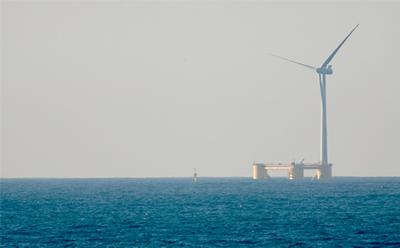Tech solutions investigated to supercharge the future of floating wind farms

Offshore wind holds vast potential to provide renewable power around the globe, however the technology still only generates a tiny fraction of the world’s electricity supply.
Pioneering research at centres such as the Southampton Marine and Maritime Institute is developing technological innovations that will enable wind energy to be captured in greater sums to meet future energy needs and help tackle climate change.
Professor Susan Gourvenec, Royal Academy of Engineering Chair in Emerging Technologies for Intelligent & Resilient Ocean Engineering at the University of Southampton, has written in The Conversation about how the rising approach of floating wind farms can be made cost-effective.
“Unfortunately, while floating wind farms are technically feasible, they’re not economically viable,” she writes. “Whereas the price for delivering offshore wind energy in 2019 ranged between £36 and £45 per MWh of electricity, current auctions for floating wind are priced over twice that amount.
“As the UK government begins an inquiry into the kind of technological innovations that could tackle climate change, offshore wind is the first port of call. With investment in the technology of the future, floating wind farms could help supercharge the country’s, and the world’s, renewable energy capacity.”
Read Professor Gourvenec’s article in full on The Conversation.